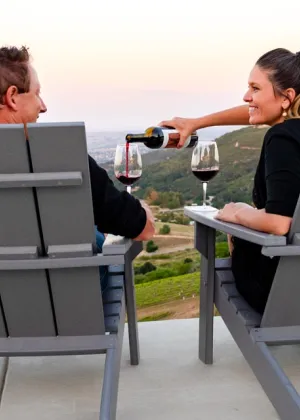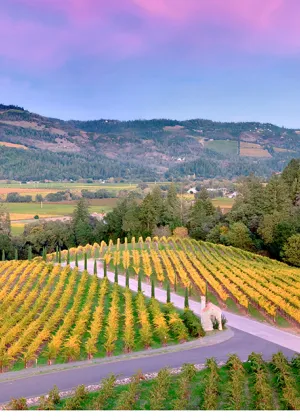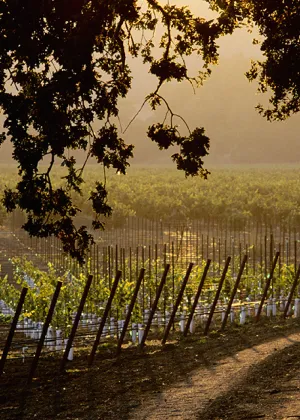
- Summary
- Official Resources
- Gallery
- Videos
- Podcasts
The statistics speak volumes: California is America’s number-one wine producer, producing 81 percent of U.S. wine sales. There are approximately 637,000 acres planted to wine grapes, making the Golden State the fourth-largest wine producer in the world. Not surprisingly, those endless rows of vines generate amazingly diverse wine tasting experiences—including everything from high-end pairings in the Napa Valley to neighborly barn tastings in Sonoma County to cave tours and winemaker chats from Mendocino County to Temecula. Start your research here and let your palate be your guide.
- Top Tours and Drivers for Exploring California Wine Country

- Napa Valley Wines & Wineries

Napa Valley Wines & Wineries
- Sonoma County Wines & Wineries

Sonoma County Wines & Wineries
- Santa Ynez Valley Wine Country
Santa Ynez Valley Wine Country
- Guide to Yucaipa Valley’s Wine Country
Guide to Yucaipa Valley’s Wine Country
- Temecula Valley Wine Country
Temecula Valley Wine Country
- North Coast Wine Country
North Coast Wine Country
- San Luis Obispo County Wine Country
San Luis Obispo County Wine Country
- Napa Valley Wine Train
Napa Valley Wine Train
- Mendocino & Sonoma County: The Wine Road
Mendocino & Sonoma County: The Wine Road
- Sip Wine in Gold Country
Sip Wine in Gold Country
- Central Coast Wine Tour
Central Coast Wine Tour
- Winding Through Wine Country
Winding Through Wine Country
- Undiscovered Wine Regions
Undiscovered Wine Regions
- Monterey's River Road Wine Trail
Monterey's River Road Wine Trail
- Napa
Napa
- Sonoma
Sonoma
- Temecula
Temecula
- Santa Ynez
Santa Ynez
More Resources
- Discover California Wines
Discover California Wines
California 101
Mendocino County Road Trip
California 101
Gold Country Road Trip
California 101
Central Valley Road Trip
California Dream Eater
The Ultimate Foodie Road Trip: Ventura + Santa Barbara
Luxury Minute
Auberge du Soleil: California Luxury Minute Resorts
California 101
California’s Highway One Road Trip
Luxury Minute
Fairmont Sonoma Mission Inn & Spa: California Luxury Minute Resorts
Luxury Minute
Farmhouse Inn: California Luxury Minute Resorts
Luxury Minute
Rancho Valencia Resort & Spa: California Luxury Minute Resorts
California 101
Anaheim: 5 Amazing Things
Native American Travel Experiences in California
1hr
3 California Podcasts You Should Know
42min
Road Trip: Music to Wine on 99
35min
Only-in-California Events
49min
Michelin Guide, L.A. to Paso Robles, LGBTQ+ Travel
46min
California’s Can’t-Miss Restaurants
53min
Dean Norris’ Temecula
27min
Exploring Sacramento
48min
Redwood Coast, Favorite Hotels, Sacramento Dining
38min
Essential Tips for California Road Trips
52min
Subscribe to our Newsletter
Get weekly travel inspiration, offers, contests, and more!
Plus, receive communications from California Grown and their exclusive ebook 'Iconic California Dishes to Celebrate California Wine Month' FREE.